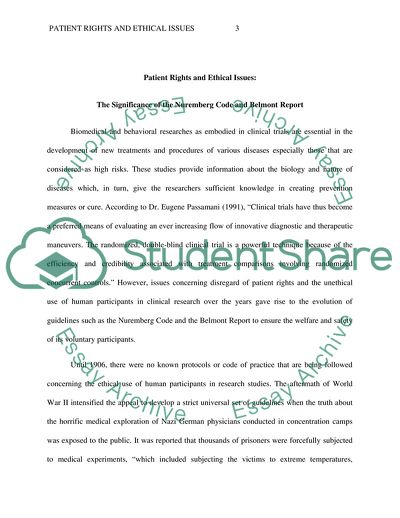Cite this document
(The Significance of the Nuremberg Code and Belmont Report Example | Topics and Well Written Essays - 1750 words, n.d.)
The Significance of the Nuremberg Code and Belmont Report Example | Topics and Well Written Essays - 1750 words. https://studentshare.org/health-sciences-medicine/1780074-patient-rights
The Significance of the Nuremberg Code and Belmont Report Example | Topics and Well Written Essays - 1750 words. https://studentshare.org/health-sciences-medicine/1780074-patient-rights
(The Significance of the Nuremberg Code and Belmont Report Example | Topics and Well Written Essays - 1750 Words)
The Significance of the Nuremberg Code and Belmont Report Example | Topics and Well Written Essays - 1750 Words. https://studentshare.org/health-sciences-medicine/1780074-patient-rights.
The Significance of the Nuremberg Code and Belmont Report Example | Topics and Well Written Essays - 1750 Words. https://studentshare.org/health-sciences-medicine/1780074-patient-rights.
“The Significance of the Nuremberg Code and Belmont Report Example | Topics and Well Written Essays - 1750 Words”. https://studentshare.org/health-sciences-medicine/1780074-patient-rights.


